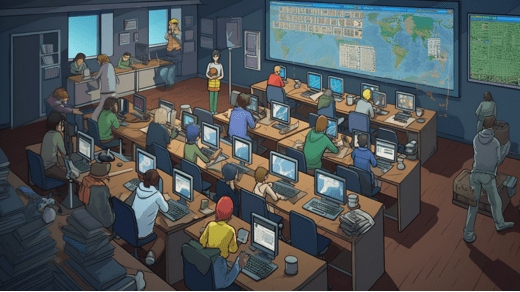
The influence of art and creativity in education is significant and multifaceted, with various advantages and disadvantages. Here are 30 key points, including the pros and cons, related to the influence of art and creativity in education:
The Influence of Art and Creativity in Education:
Pros:
- Enhanced Creativity: Fosters creativity and innovation in students.
- Critical Thinking: Encourages critical thinking and problem-solving skills.
- Self-Expression: Provides a platform for self-expression and individuality.
- Emotional Intelligence: Develops emotional intelligence and empathy.
- Cultural Appreciation: Encourages cultural appreciation and understanding.
- Improved Concentration: Enhances focus and concentration in other areas of learning.
- Stress Reduction: Art and creativity can serve as stress-relief and relaxation.
- Communication Skills: Enhances communication skills and self-confidence.
- Diversity of Perspectives: Provides diverse perspectives on topics and issues.
- Inclusivity: Supports inclusion of diverse student populations.
- Holistic Learning: Contributes to a holistic approach to education.
- Interdisciplinary Learning: Promotes interdisciplinary learning.
- Personal Growth: Fosters personal growth and self-discovery.
- Positive Learning Environment: Creates a positive and engaging learning environment.
- Fine Motor Skills: Develops fine motor skills through artistic activities.
- Cognitive Development: Supports cognitive development in students.
- Integration with Other Subjects: Art can be integrated with other subjects, making learning more engaging.
- Enhanced Memory: Visual arts can improve memory retention.
- Cultural Heritage Preservation: Encourages the preservation of cultural heritage through arts.
- Career Opportunities: Prepares students for careers in creative industries.
- Innovation and Entrepreneurship: Fosters innovation and entrepreneurship.
- Ethical Considerations: Encourages ethical considerations in creative expression.
- Community Building: Art and creativity projects can build a sense of community.
- Environmental Awareness: Supports environmental awareness and advocacy.
- Multisensory Learning: Engages multiple senses in the learning process.
- Real-World Application: Skills gained in art have real-world applications.
- Cross-Cultural Understanding: Bridges cultural gaps and promotes understanding.
- Artistic Exploration: Encourages experimentation and exploration.
- Individualized Learning: Allows for individualized and student-centered learning.
- Global Perspective: Promotes a global perspective through various artistic forms.
Cons:
- Resource Limitations: Lack of resources for art and creativity programs.
- Standardized Testing Pressure: Emphasis on standardized testing may limit creative teaching.
- Time Constraints: Scheduling pressures may limit art and creativity in the curriculum.
- Misalignment with Core Subjects: Art may be seen as less important than core subjects.
- Unequal Access: Not all students have equal access to art and creative education.
- Perceived Irrelevance: Some view art as irrelevant to future job prospects.
- Budget Cuts: Budget cuts can lead to reduced funding for arts programs.
- Overemphasis on Competition: Overemphasis on competition may hinder creativity.
- Lack of Teacher Training: Insufficient training for educators in art instruction.
- Pressure to Conform: Students may feel pressure to conform to artistic norms.
- Cultural Insensitivity: Art may perpetuate cultural insensitivity or stereotypes.
- Inequity in Arts: Inequity in representation and opportunities in the arts.
- Ethical Dilemmas: Ethical concerns in art, such as appropriation and copyright.
- Technical Bias: Emphasis on technical skill over creativity.
- Overemphasis on Assessment: Overemphasis on art assessment can stifle creativity.
- Misuse of Technology: Overreliance on technology in art education.
- Art as Elective: Art is often treated as an elective rather than a core subject.
- Limited Career Options: Concerns about limited career options in the arts.
- Influence of Pop Culture: Pop culture can influence artistic choices.
- Exposure to Controversial Content: Concerns about exposure to controversial art.
- Artistic Discouragement: Some students may face discouragement of their artistic pursuits.
- Intensive Time Commitment: Intensive time commitments for creative projects.
- Resource Drain: Art and creative programs may divert resources from core subjects.
- Skill Development Time: Developing artistic skills can take substantial time.
- Parental Influence: Parental views can influence students’ artistic choices.
- Social Pressure: Peer pressure and social norms can affect artistic expression.
- Gender Stereotypes: Gender stereotypes may impact art choices.
- Limited Representation: Lack of representation of underrepresented groups in art.
- Loss of Traditional Skills: Traditional skills may be neglected in modern art education.
- Misalignment with Career Goals: Mismatch between artistic skills and students’ career goals.
In conclusion, the influence of art and creativity in education offers numerous benefits, such as enhanced creativity, emotional intelligence, and holistic learning. However, challenges include resource limitations, unequal access, and the perception of art as less important than core subjects. Balancing a well-rounded education that includes the arts is essential for nurturing creativity and personal growth.